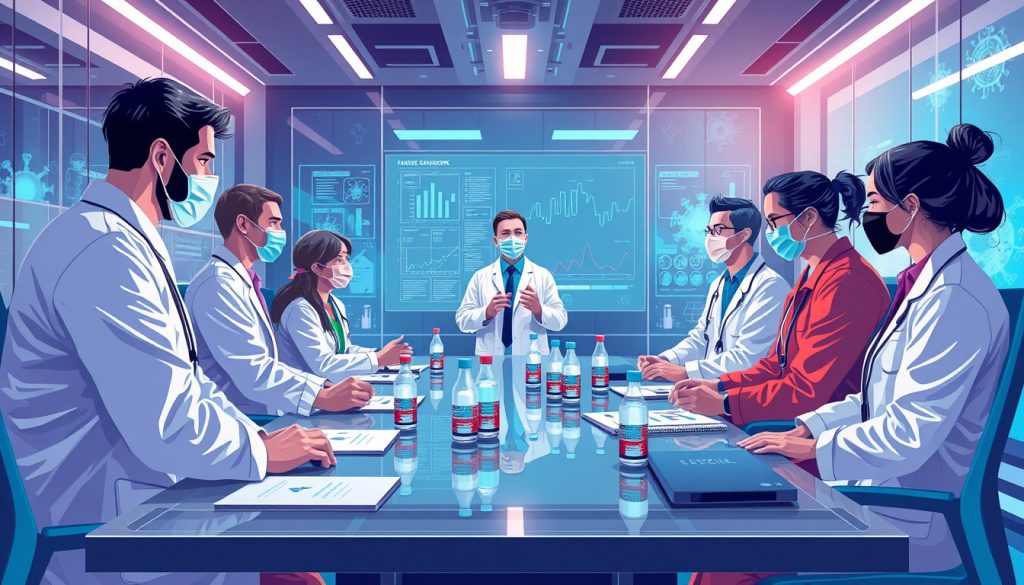The U.S.
Commerce Department’s recent initiation of a Section 232 investigation signals a significant development in the pharmaceutical sector.
As the country grapples with vulnerabilities in its supply chains, particularly those reliant on imports from nations like China and India, this inquiry aims to assess the national security implications of importing pharmaceuticals and their ingredients.
With high-profile companies already pivoting towards domestic manufacturing in response to growing concerns over foreign dependence, the investigation foreshadows potential tariffs on pharmaceutical imports, drawing parallels to previous tariff actions on steel and aluminum.
This article delves into the implications of such tariffs for the biotech sector, exploring the shift towards domestic manufacturing and the broader ramifications for drugmakers and consumers alike.

Key Takeaways
- The U.S. Commerce Department’s investigation into pharmaceutical imports could lead to new tariffs, reflecting concerns over national security.
- The move aims to boost domestic drug manufacturing and reduce dependence on imports from countries like China and India.
- Pharmaceutical companies may face financial challenges as they adapt to potential tariffs and the shift in manufacturing strategy.
Implications of Tariffs on Pharmaceutical Imports
The U.S.
Commerce Department’s recent launch of a Section 232 investigation signals a crucial pivot in the nation’s approach to pharmaceutical imports, highlighting the increasingly intertwined relationship between national security and healthcare.
This investigation, aimed at evaluating the implications of importing pharmaceuticals and their ingredients, may lead to the establishment of tariffs reminiscent of those imposed on steel and aluminum during the previous administration.
By examining both branded and generic drugs, the Commerce Department seeks to delineate the vulnerabilities in the current supply chain, particularly the United States’ reliance on countries such as China and India for critical medications.
Notably, Commerce Secretary Howard Lutnick stressed the urgency of domestic manufacturing, suggesting that enhancing local production capabilities is essential for safeguarding the availability of essential medications.
Major pharmaceutical firms, including Eli Lilly, Johnson & Johnson, and Novartis, are already repositioning their strategies to build new manufacturing facilities on American soil, albeit acknowledging that such transitions could be protracted and complex.
The anticipated fallout for drugmakers encompasses not only increased operational costs but also potential cuts to vital research and development budgets, raising concerns about the long-term impacts on innovation.
As stakeholders prepare for significant policy shifts, the Commerce Department has opened a window for public comment to inform its proceedings, hinting that substantial changes in tariff regulations may arrive within the next few months.
This evolving landscape poses both challenges and opportunities for biotechnology executives as they navigate the implications of reshored manufacturing and respond to shifting global trade dynamics.
The Shift Towards Domestic Manufacturing
As the U.S.
grapples with an evolving landscape of pharmaceutical manufacturing, biotech executives must stay informed about the implications of the Section 232 investigation initiated by the Commerce Department.
This probing inquiry not only focuses on the potential national security risks associated with globalization but also examines the financial ramifications that increased domestic production could incur for pharmaceutical companies.
Executives are encouraged to analyze how the move to establish tariffs on imported drugs—an echo of past policies—could affect their operational costs and supply chain strategies.
The shift toward local manufacturing could lead to significant adjustments in business models, particularly for companies that have historically benefited from overseas production efficiencies.
Additionally, the long-term effects of potential reductions in R&D funding as companies reallocate budgets to cover higher manufacturing costs merits careful consideration.
Leaders in the biotech industry should also prepare for potential feedback loops from the Commerce Department’s request for public comments, as engaging in this dialogue could not only influence policy outcomes but also help shape industry standards in alignment with national interests.















